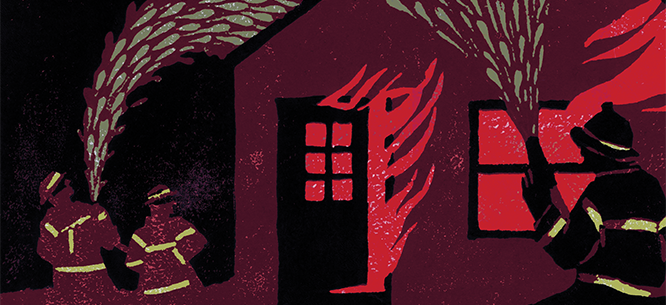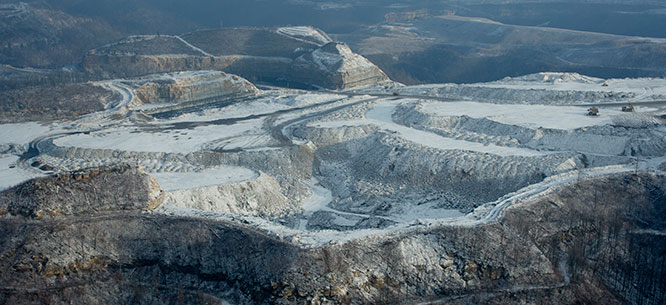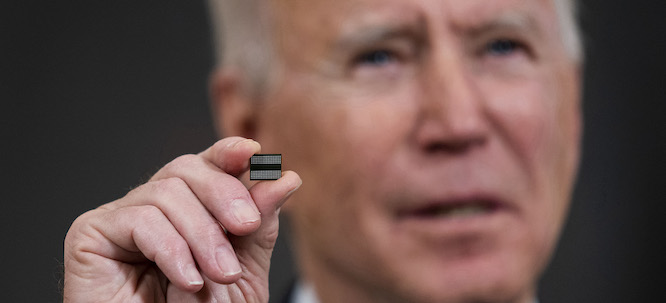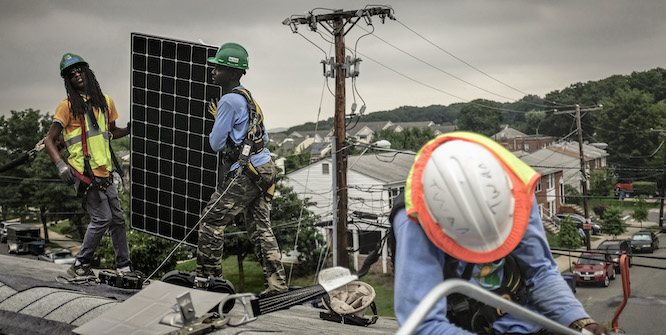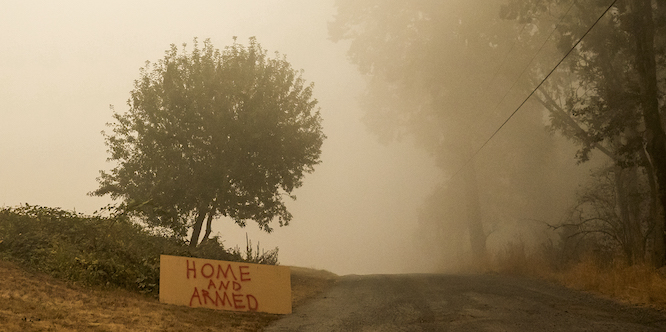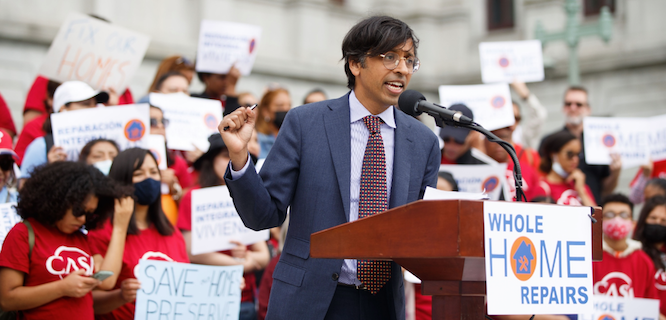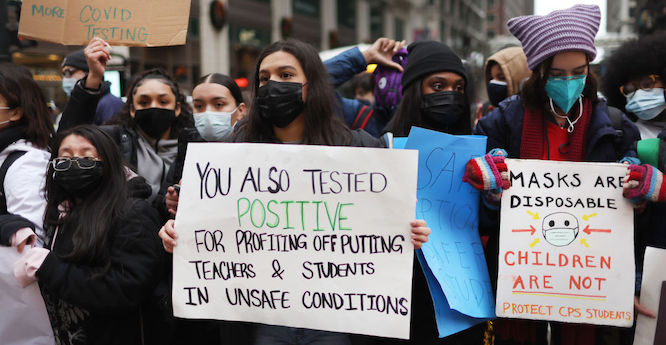The Green New Deal has been largely blocked at the national level, but it is thriving in communities, cities, and states. Jeremy Brecher’s new book is both an urgent call to action and proof of concept.
Starting where we’re at
Less than one week after Trump was re-elected to the single most powerful political office in the world, it seems like a horrible time to release a book about the Green New Deal.
Thinking back to 2018, not so long ago in time but perhaps much longer in space, to when the Green New Deal was launched into public attention as a bold proposal for transformative national legislation, is frankly, beyond depressing. Loss, grief and rage compete with numbness and shock, easily overwhelming any effort to fathom where we were then, and where we find ourselves now.
But this is not a depressing story. We have no time for that now.
This is a story, a true story, about expanding the sense of what is possible and thereby expanding the actual limits of the possible. It is about shifting the balance of power and expanding democracy – what could be more right, right now? This story weaves once strange and wary bedfellows into a surprising sort of magical fabric, capable of keeping us safe as we pull the rug from under kings. This is the view from below.
What makes a Green New Dealer?
 Jeremy Brecher’s new book, The Green New Deal from Below: How Ordinary People Are Building a Just and Climate-Safe Economy, is a timely and important contribution for organizers and anyone thinking about rebuilding the world from the bottom up.
Jeremy Brecher’s new book, The Green New Deal from Below: How Ordinary People Are Building a Just and Climate-Safe Economy, is a timely and important contribution for organizers and anyone thinking about rebuilding the world from the bottom up.
Drawing on decades of hands-on experience at the intersections of environmental, labor, and justice movements, Brecher offers an overview of Green New Deal from Below initiatives across various sectors and locations, highlighting a diverse array of programs already in progress or under development. The initiatives shared by Green New Dealers are intended to inspire countless more projects, which can serve as the foundation for local, national, and even global mobilization and reconstruction – even, and perhaps especially in times when national legislation cannot be relied upon.
Brecher begins with questions, “Is [the Green New Deal from Below] a brilliant flame that may simply burn out? Will it continue as a force, but not a decisive element in a society and world hurtling toward midnight? Or will it prove to be the start of a turn away from catastrophe and toward security and justice? The answer will largely depend on what people decide to do with the possibilities [it] opens up” (10).
The Green New Deal is a visionary program designed to protect the earth’s climate while creating good jobs, reducing injustice, and eliminating poverty. Like The New Deal of the 1930s, the Green New Deal is not a single program or piece of legislation – rather, according to Brecher, it exhibits many of the traits of a social movement. “[The New Deal] was a whole era of turmoil in which contesting forces tried to address a devastating crisis and shape the future of American society. In addition to its famous “alphabet soup” of federal agencies, the New Deal was part of a broader process of social change that included experimentation at the state, regional, and local levels; organization among labor, the unemployed, urban residents, the elderly, and other grassroots constituencies; and lively debate on future possibilities that went far beyond the policies actually adopted” (12). While the New Deal certainly had its limitations in terms of racial and gender justice, it was this unifying and expansive vision that set it apart as a cohesive and immensely transformative program.
From its outset, the core principle of the Green New Deal has been and remains, “to unite the necessity for climate protection with the goals of full employment and social justice” (11). In other words, not only does the GND provide a unifying vision that aligns environmental, labor, and justice movements together in the pursuit of mutual aims, it weaves constituencies and communities into transformative power blocs, greater than the sum of their parts.
Though the GND has so far been consistently blocked and largely coopted at the national level by the fossil fuel lobby, and by corporate interests antagonistic to its inherent socialist implications, a lesser-known wave of initiatives has also emerged. Driven by community groups, unions, city and state governments, tribes, students, and other nonfederal actors, all aimed at advancing the climate protection, economic and social justice objectives of the Green New Deal, this grassroots movement can be recognized as “a Green New Deal from Below.”
“So far, these forces have managed to block the Green New Deal at a national level. The strategy of the Green New Deal from Below is to outflank them” (174). Brecher warns against mistaking the Green New Deal from Below movement for an unrelated collection of isolated or even of loosely related interventions – that would be to miss the forest for the trees, or as Brecher describes it, that would be like describing a collection of lecture halls, library, stadium, cafeteria, and dorms but failing to recognize the university.
The type of vision fueled and integrative coalition building exemplified by diverse Green New Dealers has major potential for mass member organizing, shifting power, expanding democracy, and could provide the way forward from our current predicament, shoved between a neoliberal heat-rock and a cold, hard fascist place.
How to Green New Deal from Below
Los Angeles City Council President Nury Martinez, who has introduced a motion to create a new city office to support workers transitioning out of jobs affected by new technology, including those in the oil and gas industry, summed it up well: the city cannot “correct the sins of environmental racism” by “taking away jobs from working-class communities” (108).
The core idea behind Green New Deal from Below initiatives is to address the urgent need for climate protection while also meeting the needs of working people and marginalized communities, an approach that moves beyond fragmented policies to a comprehensive set of strategies for social change. It integrates climate protection with the creation of good jobs and tackles the disproportionate concentration of carbon pollution, such as from fossil fuel plants, in low-income communities of color. This policy integration is reflected in the collaboration of previously separate or opposing constituencies. “When once-divided groups reach out to each other, explore common needs and interests, and start cooperating for common objectives they thereby create new forms of social action. That is the process that [Brecher has] called the emergence of “common preservation”” (180).
The initiatives described by Brecher are largely driven by such coalitions of diverse groups working toward shared goals, often including neighborhood organizations, unions, racial and ethnic justice groups, political leaders, government officials, youth and senior organizations, religious congregations, and climate justice advocates. Chapters 1-4 provide detailed but highly accessible examples of such initiatives, including candid debriefs that don’t shy away from exploring lessons learned from mistakes, at the community, municipal, and state levels.
One particularly potent lesson, gleaned through numerous campaigns, relates to tensions that can arise between environmental and labor protections. Historically and now, climate protection policies have often been viewed as a threat to workers and communities reliant on the fossil fuel economy. This perception generates opposition to climate action, with certain communities and worker groups highlighted as “poster children” for the negative impacts of such policies, leading to the widely framed “environment vs. jobs” debate, fueling conflict between environmentalists and organized labor, often amplified by fossil fuel interests.
Brecher lays out three key shifts in mindset that are beginning to offer an alternative to this polarization (147). First, many trade unionists have come to recognize that the transition to cleaner energy is inevitable, and that their members will be vulnerable unless policies are put in place to protect them. Second, climate advocates are realizing that their policies will face significant resistance unless they also address the needs of workers and communities that could be negatively impacted by these changes. Third, the core idea of the Green New Deal, that climate protection can be an opportunity to address inequality and injustice, opens up a broader vision for social change that transcends narrow interest group politics.
This “new thinking” often begins with specific interests but is increasingly fostering a broader awareness. Unions are recognizing the necessity of climate protection; environmentalists are acknowledging the importance of community well-being; and justice advocates see the potential for new coalitions to tackle long-standing inequities. “The result has been the development of coalitions among groups that had previously been at odds, lobbing virtual projectiles at each other from separate silos” (148).
Green New Deal from Below initiatives contrast sharply with dominant neoliberal public policies that prioritize private enterprise as the primary vehicle for achieving social goals and restrict government action to facilitating private wealth accumulation – or more simply, they intentionally break from the profit over people and planet model of business as usual. Green New Deal from Below programs emphasize public planning, investment, and strict criteria for achieving public objectives. Their implementation involves not just private corporations but also government-run programs, public banks, cooperatives, and other alternatives to profit-driven enterprises. Resources are often raised through strategies like pollution fees, taxes on large corporations, and uber-wealthy individual incomes.
The climate policies of Green New Deals from Below aim to reduce greenhouse gas emissions at the pace required by climate science with a focus on proven strategies: expanding renewable energy, phasing out fossil fuels, decreasing energy demand by increasing energy efficiency and doing more with less through programs focused on public abundance, while rejecting more costly, risky and green-washed approaches like carbon capture, hydrogen blends with fossil fuels, and nuclear energy.
Brecher gets into detail via diverse examples of campaigns, direct actions, community and public projects, as well as overarching and particular strategies in chapters 5-11: Climate-Safe Energy Production, Negawatts (Efficiency and Managed Contractions), Fossil Fuel Phaseout, Transforming Transportation, Protecting Workers and Communities on the Ground, Just Transition in the States, and New Deal Jobs for the Future. This is a wealth of information in a highly accessible and actionable presentation – from the nitty gritty of organizing meetings and local bicycle lanes to very large-scale campaigns like public jobs guarantees.
Strategy from below
The Green New Deal from Below does not provide a strategy for total social transformation. “That would require transformation of the basic structures of the national and world order, including capitalism and the nation-state system. The Green New Deal from Below can be part of that more extensive process of change, but it cannot subsume it” (174).
The Green New Deal from Below is a hybrid movement that operates both inside and outside the dominant political system, including elected officials, party leaders, government bureaucrats, and electoral activists, as well as communities, ethnic groups, labor organizations, and other civil society groups. It pursues its goals through a mix of conventional political tactics, such as supporting candidates, lobbying for legislation, and public education, alongside direct-action methods, including occupying political offices, blocking fossil fuel pipelines, and supporting strikes aimed at a just transition to a climate-safe economy.
These initiatives strategically function both within, alongside, and in opposition to existing political institutions. Actions focus on tangible changes that directly improve people’s lives. Whether it’s shutting down a polluting coal plant in an asthma-ridden community or providing free transit or bicycles to young people, these initiatives aim to make a real difference. They also educate and inspire: free transit and bicycles not only reduce vehicle pollution but also allow young people to explore alternatives to car-dependent lifestyles.
Additionally, participation and justice are centered in practice. Actions are also almost always led by coalitions of diverse groups. For example, the Green New Deal for Education brings together teachers, school staff, students, parents, unions, and racial justice advocates to fight for investment in healthy schools free from fossil fuel pollution. Sate coalitions have united unions, climate-impacted communities, racial and ethnic justice groups, and climate advocates to push for legislation that phases out fossil fuels in ways that create good jobs, support community development, reduce environmental injustices, and build climate-friendly housing and transit.
Historical sociologist Michael Mann argues that new solutions to societal problems often arise from the overlooked spaces within existing power structures – what he calls the “interstices.” These gaps, often hidden from the mainstream, provide fertile ground for marginalized or seemingly powerless groups to propose alternatives to the status quo. This process is sometimes called the “Lilliput strategy,” where small, isolated efforts are linked to create larger systemic change. However, Brecher points out that this strategy is not without tension (169). It requires balancing the need for identity and independence within each group with the necessity of broader cooperation. The resulting tension can either lead to fragmentation or domination, but it can also spark a process of collaboration where the distinct needs and concerns of each group are incorporated into a larger, unified vision.
This dynamic is key to the development of the Green New Deal from Below. While recognizing the unique needs of different constituencies, advocates of the Green New Deal have worked to forge connections between diverse groups that have historically been at odds. A notable example mentioned previously is the collaboration between organized labor and environmentalists – two groups that have often been in conflict. Rather than forcing these groups to give up their individual identities, the Green New Deal offers a shared identity centered on common goals. The success of these coalitions depends on ensuring that all participants benefit from cooperation through policies that combine labor protections, environmental justice, and greenhouse gas reductions. However, Brecher warns that these coalitions are fragile and can falter if the priorities of key constituencies are not given adequate attention.
Ultimately, Green New Deal from Below actions seek to shift the balance of power away from fossil fuel polluters, exploitative corporations, and the wealthy elite, toward exploited workers, marginalized communities, and non-elite groups. At their heart, they aim to expand democracy, challenge the rise of autocracy and plutocracy, and ensure power is more equally distributed and accessible to all.
By helping to build organized constituencies and coalitions that serve as political foundations for broader Green New Deal campaigns, these projects also create institutional building blocks, from energy systems to transportation networks, that can become integral parts of the economic and social infrastructure of a larger Green New Deal. By engaging people in projects that reflect common interests and a shared vision, these initiatives help overcome divisions and contradictions that weaken popular movements. They also reduce the influence of anti–Green New Deal forces by dividing them, disorienting them, undermining their support base, and, at times, even winning them over.
Brecher’s presentation reveals that the fight for the Green New Deal is closely tied to the fight for democracy. These initiatives offer models for, and demonstrate the benefits of, popular democracy. Green New Deal from Below projects show that people can achieve tangible gains that improve their lives, building a base for the protection and expansion of democratic governance at every level, embodying local participatory democracy while also reinforcing representative democracy against the threat of fascism at the national level.
Local and state-level Green New Deal initiatives are therefore crucial for achieving both climate and justice goals. They help build momentum and power for a national Green New Deal and serve as testing grounds, offering a “proof of concept.” These building blocks, when linked, form a more effective Green New Deal with deep local roots. Programs “from below” can then connect with each other and align with national planning and investment. Some national proposals even outline policies to facilitate this coordination. While federal and global action are needed to fully realize Green New Deal goals, the movement is already taking shape at the local level.
Going further
Brecher cautions, that while the Green New Deal program is crucial and beneficial, it is not sufficient on its own to address the deeper structural issues of an unjust and self-destructive global order. There are also critiques outside the scope of this book which assert that even if the Green New Deal was adopted at the national level today, on its own, it doesn’t go far enough, fast enough on climate protection to avert devasting outcomes.
One of its strategic objectives must therefore be to pave the way for more radical and far-reaching forms of change. Indeed, an internationalist Global Green New Deal has begun to materialize – both “from below” and championed to various degrees by a few government and multinational formations. The key will be to continue to build and connect participatory, justice centered activity around the world in ever widening and deepening solidarity.
Today, we are living with a profound sense of urgency – the urgency of the climate crisis, as well as the urgency of those suffering and dying due to injustice. The original Green New Deal proposal responded to this by calling for a ten-year mobilization aimed at transforming American society and economy as dramatically as the New Deal and the wartime mobilization during World War II. “The Green New Deal arose in a sea of hopelessness and despair. It pointed the way toward viable alternatives to the realities that evoked that hopelessness and despair. The Green New Deal from Below provides people with a way to start building those alternatives day by day, where they live and work” (180).
Seven years later, a recent headline from New Scientist reads: “The 1.5°C target is dead, but climate action needn’t be”. For the first time, climate scientists have explicitly said it will be impossible to limit peak warming to 1.5°C. Our focus must be on taking real action, like the initiatives Brecher has laid out and like many others around the world, not on meaningless platitudes and slogans like “Keep 1.5°C alive” or vague promises of “net-zero”.
At the outset of the book, Brecher cites the world historian Arnold Toynbee on how great civilizational changes occur. The existing leadership of existing institutions face new challenges and fail to change to meet them. But a “creative minority” may arise that proposes and begins to implement new solutions. “Those building the Green New Deal are creating such new solutions, from below” (180).
Therefore, perhaps the greatest success, as well as the greatest potential, of the Green New Deal from Below is its ability to expand the boundaries of what is possible, bringing together and empowering people to fight for the things they need but have long considered out of reach.
Workin’ on a world
We may never know if these solutions will be sufficient or come in time. But Brecher offers us the chance to resonate with the feelings expressed by songwriter Iris Dement in her song “Workin’ on a World.” She recalls waking each day “filled with sadness, fear, and dread,” as the world she once knew seemed to be “crashing to the ground.”
Looking around where we find ourselves this November of 2024, in the shadow of so much loss but with so much yet to lose, it wouldn’t be crazy to admit to feeling the same. Yet, as Iris “reflected on the struggles of those who came before her, the sacrifices they made, she realized those sacrifices had opened doors for her that they never lived to see” (180).
“Now I’m working on a world I may never see,
I’m joining forces with the warriors of love
Who came before and will follow you and me.
I get up in the morning knowing I’m privileged just to be
Working on a world I may never see.”
Brecher concludes, “whether we will see the world of the Green New Deal fully realized, in the Green New Deal from Below, we can see that right now we are making a part of that world” (180).
I’d only add that in so doing, we are also each reaffirming our own and one another’s right to be here, to reclaim our world here and now with a place for us all in it, to choose to live and to help live, to occupy our lives. We’re not just doing it for the future, we’re doing it for the now. In the words of a different movement ancestor, Salaria Kea, an American nurse, desegregation activist, and the only black nurse who worked in the Abraham Lincoln Brigade during the Spanish Civil War, fighting against fascism on the frontlines:
“I’m not just goin’ to sit down and let this happen. I’m going out and help, even if it is my life. But I’m helping. This is my world too.”
Through action, especially through our collective action, we are our vision come to life. We are the embodiment of that world we’re busy working on. Through us, it already does exist.
The Labor Network for Sustainability is taking the opportunity to launch the book, as well as the organizing models it provides, in a live webinar event scheduled for Wednesday, November 20th at 7:30 pm ET.
The post
Expanding the Possible, from Below first appeared on
Dissident Voice.
This post was originally published on Dissident Voice.
